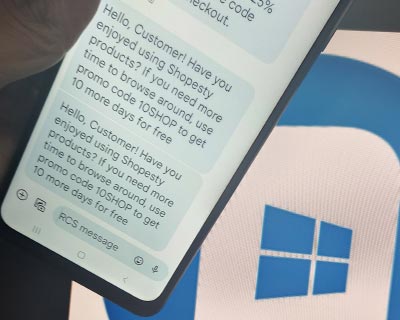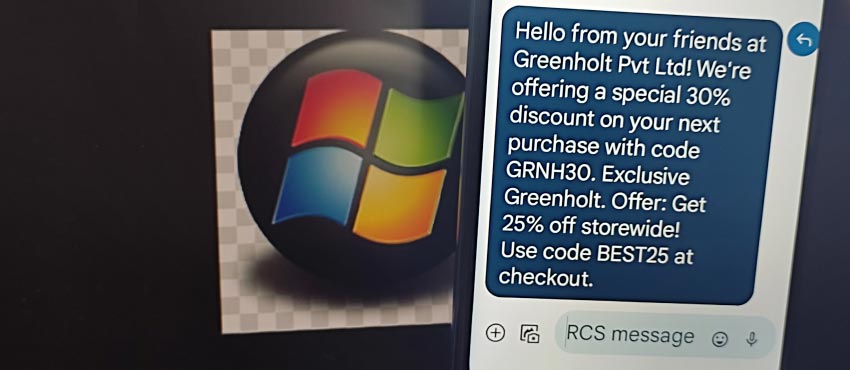Bulk SMS Software for Windows: Level of Support and System Integration
It's Important to Review the specific support options and terms provided by the Bulk SMS Software vendor you choose. They may have different support levels, response times, and availability based on the software package or subscription you have. Consider your organization's needs and budget when evaluating the support options to ensure you have the necessary resources to address any issues or questions that may arise during your use of the software.
👤 Techsavvy
📅
🕔 6 Minutes

Level of Support is Provided for Bulk SMS Software for Windows
The level of support provided for Bulk SMS Software for Windows may vary depending on the software vendor and the specific package or licensing agreement you have. Here's an overview of the typical support options that are commonly available:-
-
01
Documentation and User Guides:
Most Bulk SMS Software vendors provide detailed documentation and user guides to help users understand the software's features, functionalities, and configuration options. These resources typically include step-by-step instructions, FAQs, troubleshooting tips, and best practices. They serve as self-help references for users to explore and resolve common issues on their own.
-
02
Online Knowledge Base:
Many software vendors maintain an online knowledge base or a support portal that contains a comprehensive collection of articles, tutorials, and frequently asked questions (FAQs). The knowledge base is designed to address common queries, provide solutions to known issues, and offer guidance on various aspects of using the Bulk SMS Software. Users can search for specific topics or browse through relevant categories to find the information they need.
-
03
Email Support:
Email support is a common form of assistance provided by Bulk SMS Software vendors. Users can submit their queries or issues via email to the vendor's support team, who will respond with guidance or solutions. Email support allows users to describe their concerns in detail and attach any necessary files or screenshots to aid in problem diagnosis and resolution. Response times for email support may vary depending on the vendor's service-level agreements (SLAs) and the urgency of the inquiry.
-
04Phone Support:
Some vendors offer phone support, allowing users to directly speak with a support representative to discuss their concerns or seek immediate assistance. Phone support can be particularly useful for urgent or complex issues that require real-time interaction and troubleshooting. It provides a more personalized and interactive support experience, enabling users to have a direct conversation and receive guidance in real-time.
-
05Live
Chat Support:
Live chat support is another common support option provided by Bulk SMS Software vendors. It enables users to engage in real-time text-based conversations with support agents through a chat interface on the vendor's website or within the software itself. Live chat support offers a convenient and efficient way to seek immediate help, ask questions, and receive step-by-step guidance. Response times through live chat can be quicker compared to email support.
-
06
Community Forums or User Groups:
Some Bulk SMS Software vendors host online community forums or user groups where users can interact with each other, share experiences, exchange knowledge, and seek assistance. These forums provide a platform for users to discuss common issues, ask questions, and receive help from fellow users or even the vendor's support team. Participating in these communities can provide valuable insights, tips, and solutions from experienced users.
-
07
Paid Support Plans:
In addition to the standard support options, some Bulk SMS Software vendors offer premium or paid support plans with enhanced features. These plans may include benefits like faster response times, priority support queues, dedicated account managers, extended support hours, or even onsite assistance, depending on the vendor and the level of support selected.
In conclusion, the legal and regulatory requirements for using bulk SMS software may vary from country to country. However, common requirements include obtaining consent from recipients, complying with data protection requirements, adhering to anti-spam laws, considering industry-specific regulations, complying with consumer protection laws, and providing opt-out mechanisms for recipients. Businesses using bulk SMS software should be aware of these requirements and ensure that they comply with all applicable laws and regulations to avoid legal liabilities and reputational harm.
Integration of Bulk SMS Software for Windows with my Existing Systems or Applications
Integrating Bulk SMS Software for Windows with your existing systems or applications can streamline your SMS marketing efforts and enable seamless communication with your audience. Here's a step-by-step explanation of the integration process:

-
Understand API Integration:
Bulk SMS Software often provides an Application Programming Interface (API) that allows you to integrate it with your existing systems. An API is a set of rules and protocols that enable different software systems to communicate and interact with each other. By utilizing the API provided by the Bulk SMS Software, you can connect it with your systems and exchange data seamlessly.
-
API Documentation:
Start by Reviewing the API documentation provided by the Bulk SMS Software. This documentation outlines the methods, endpoints, parameters, and authentication requirements necessary for integrating the bulk SMS software into your systems. It provides detailed instructions on how to make API calls and retrieve the desired information.
-
Determine Integration Scenarios:
Identify the specific integration scenarios that align with your business needs. For example, you might want to integrate the Bulk SMS Software with your customer relationship management (CRM) system to send automated SMS notifications based on certain events. Alternatively, you may wish to integrate it with your e-commerce platform to send order updates or transactional messages.
-
Developer Resources:
If you have an in-house development team, assign them the task of integrating the Bulk SMS Software. Provide them with the API documentation and any other relevant resources provided by the software vendor. If you don't have an in-house team, consider hiring a developer or working with a software development agency experienced in API integrations.
-
API Authentication:
Most Bulk SMS Software APIs require authentication to ensure secure access to the system. The API documentation will guide you on the authentication methods supported by the software, such as API keys, access tokens, or OAuth. You'll need to generate the necessary credentials and ensure they are securely stored and managed within your systems.
-
Develop Integration Code:
The integration code will vary depending on the programming language and frameworks used in your existing systems. Utilize the API documentation and libraries provided by the Bulk SMS Software vendor to help you make the necessary API calls. Your development team will need to write code that interacts with the Software API, handles data exchange, and processes the responses.
-
Data Mapping:
Determine how the data will flow between your existing systems and the Bulk SMS Software. Identify the relevant data fields and their mapping to ensure that the right information is transferred accurately. For example, if you're integrating with a CRM system, you may need to map customer details, such as names and phone numbers, to the corresponding fields in the Bulk SMS Software.
-
Testing and Debugging:
Thoroughly test the integration to ensure proper functionality and error handling. Conduct tests to verify that data is being transferred correctly and that messages are sent as expected. Use sample data or a test environment to avoid any unintended impacts on your live systems during the testing phase. Debug any issues encountered and refine the integration code as necessary.
-
Deployment and Monitoring:
Once the integration has been tested and validated, deploy the integrated solution in your production environment. Monitor the integration closely, especially during the initial stages, to ensure that messages are being sent accurately and that any errors or exceptions are promptly addressed.
-
Ongoing Maintenance and Updates:
As your Systems or the Bulk SMS Software evolve, periodic maintenance and updates may be required. Stay informed about any changes or updates released by the software vendor, and ensure that your integration remains compatible and up to date.